Cambridge University Botanic Garden marks 175th birthday
- Published
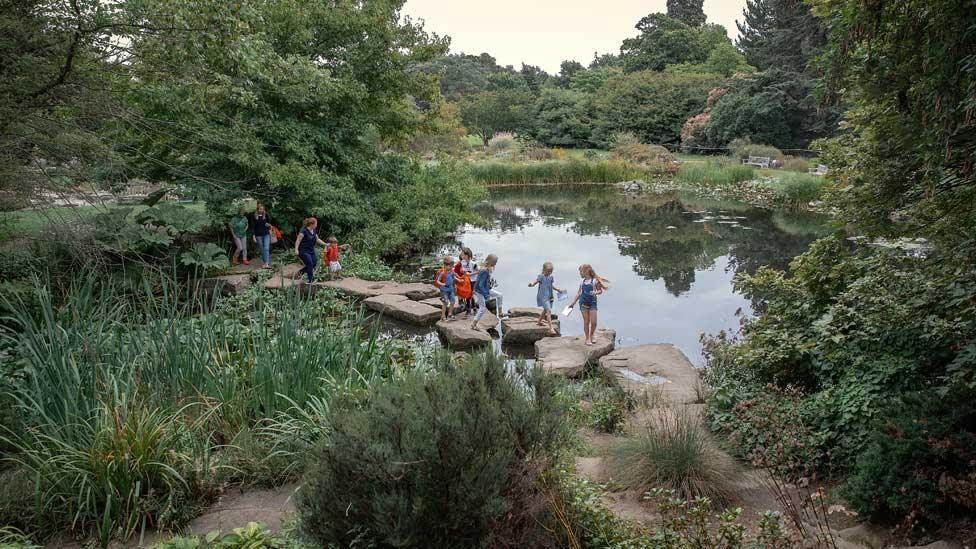
The garden is popular with visitors of all ages
A university research garden that offered a "safe green space" for visitors during the pandemic is marking its 175th anniversary.
Cambridge University Botanic Garden, external was moved to its current site in 1846 by botany professor John Stevens Henslow, Charles Darwin, external's mentor.
Curator Sam Brockington said it was now a "living museum" that "showcases the rare diversity" of its 8,000 species.
These include a moonflower, which attracted global interest in February.
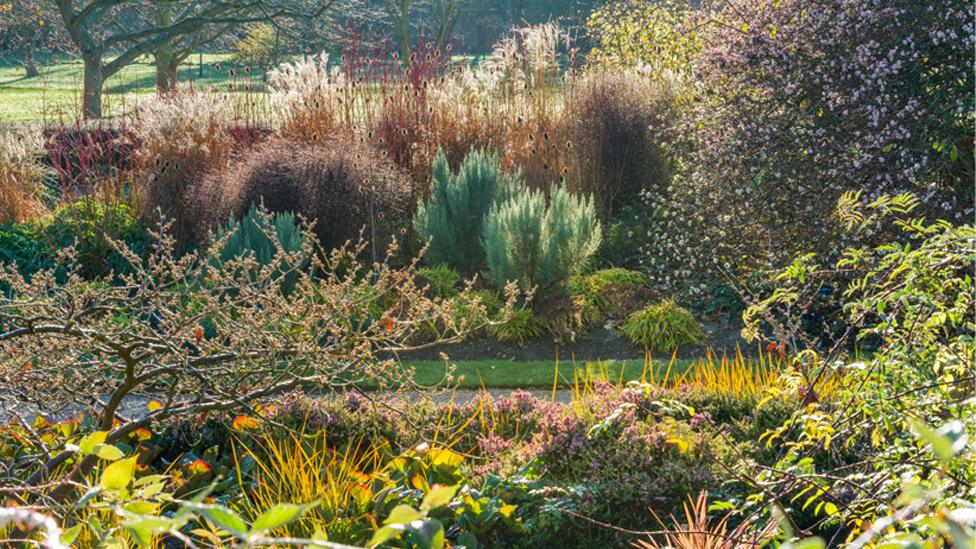
The half-acre (0.20 hectare) winter garden is within the 40-acre (16 hectares) Cambridge University Botanic Garden
It is marking its anniversary with tours, live music and a photography competition, external.
The 40-acre (16 hectare) garden closed to the public between April and June 2020, but was able to stay open through subsequent lockdowns by restricting visitor numbers.
Dr Brockington said it was "really affirming" to offer people "a safe green space" during the pandemic.

This 1940s aerial shot of the garden shows the allotments used to grow food during World War Two rationing

The university's first garden was created to grow plants for use by medical students
This was not the first time the garden performed a crucial role during a national crisis.
Twenty acres (eight hectares) were turned into allotments during World War Two.
The university reclaimed them from the 1950s onwards, creating demonstration gardens to highlight plant science research.
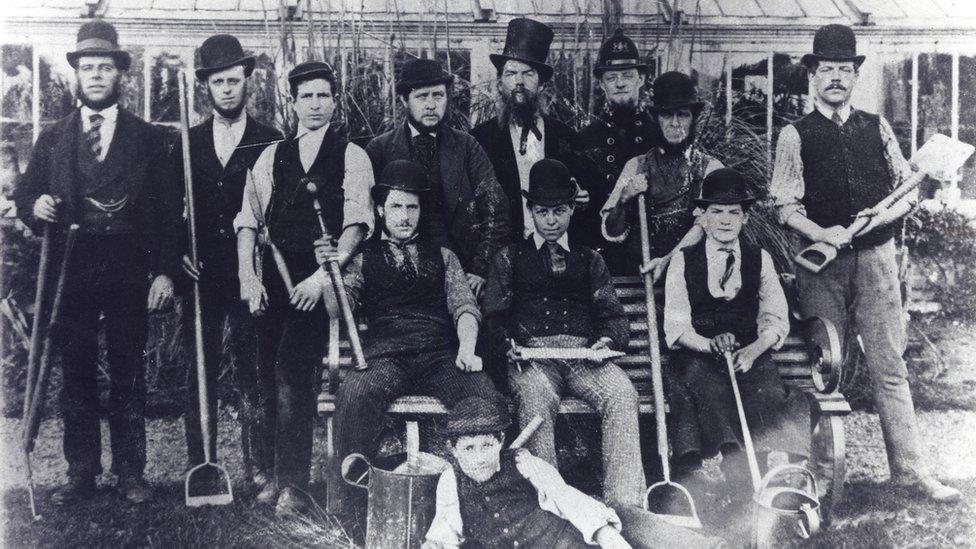
The Victorian curator William Mud (in the top hat) is shown with his horticultural staff in 1876
These include the chronological border, which allows visitors to walk along a timeline of plants introduced to Britain over the past 500 years; a scented garden and a dry garden.
The University of Cambridge has had a botanic garden since 1762, but its purpose was the cultivation of medicinal herbs for use by medical students.
Henslow's vision was a garden that grew plants to support the burgeoning science and scholarship of botany.

A rock garden was created on part of the former allotment site in the 1950s

The fountain is always a popular spot with visitors
The professor was behind Darwin's decision to join the HMS Beagle voyage from 1831 to 1836.
As it circumnavigated the world, the naturalist gathered specimens, which he sent back to Henslow. They are still in the botanic garden's herbarium., external

In recent years, planting in front of the glasshouses has been designed to feed bees
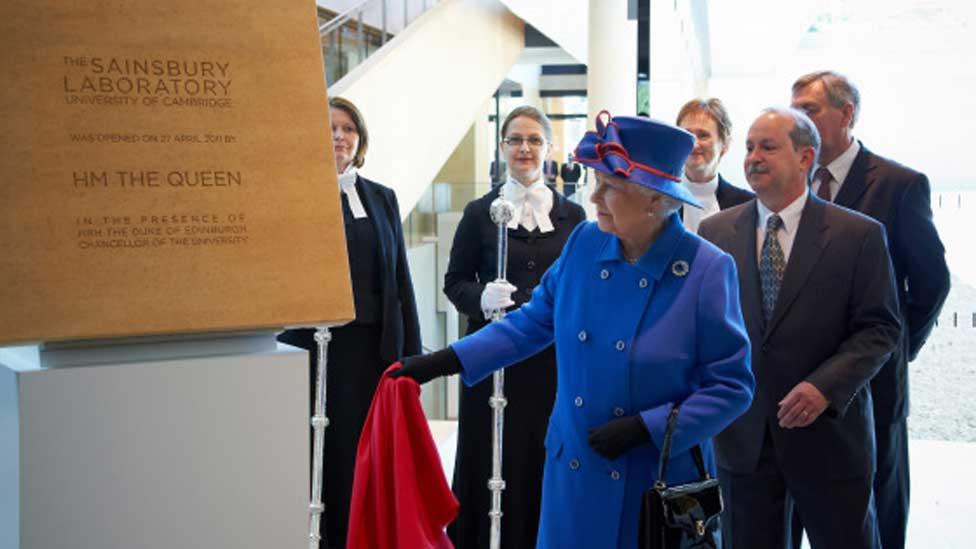
The £82m Sainsbury laboratory was opened in 2011 and its staff research plant growth and development
The garden has 2,000 trees, ponds and Victorian glass houses which recreate seven climate zones.
Dr Brockington said some of its "phenomenal research" included the discovery of the rare mineral vaterite within an alpine plant, external and how petals produced a "blue halo" to help bees find flowers, external.
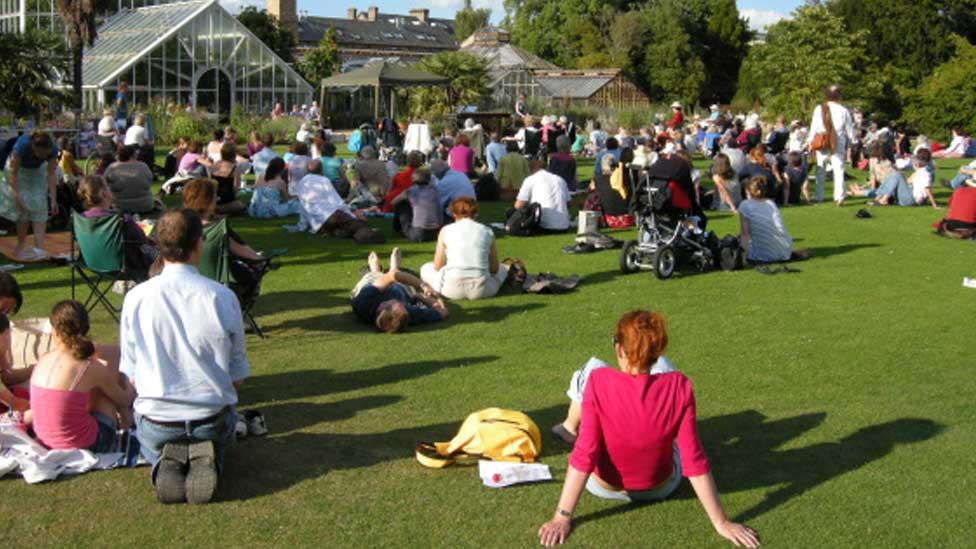
A pre-pandemic summer music night at the garden

Find BBC News: East of England on Facebook, external, Instagram, external and Twitter, external. If you have a story suggestion email eastofenglandnews@bbc.co.uk
Related topics
- Published20 February 2021
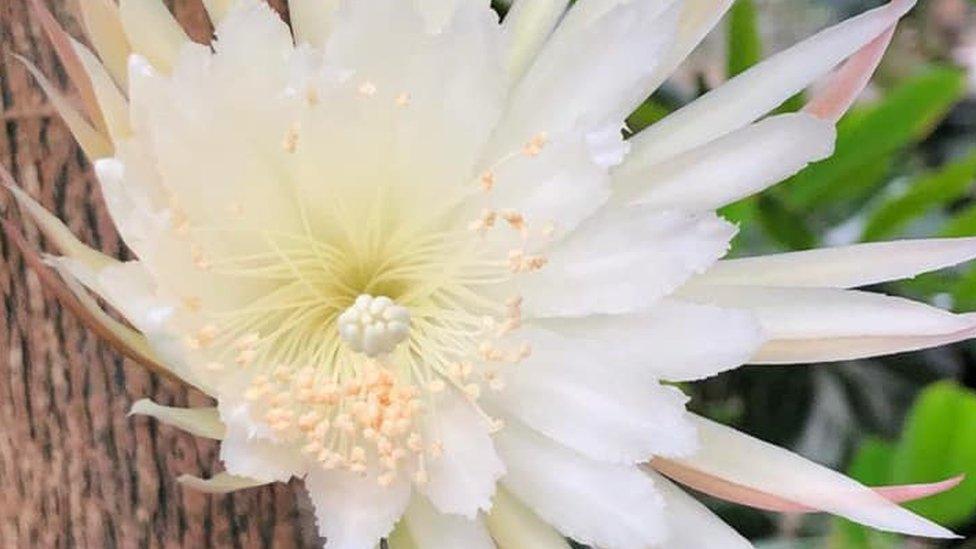
- Published22 October 2020
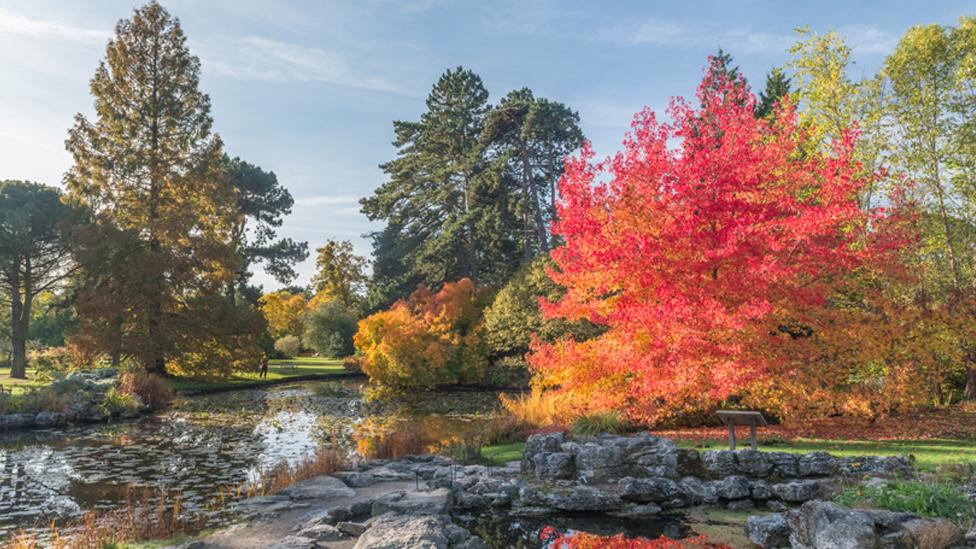
- Published1 January 2019
